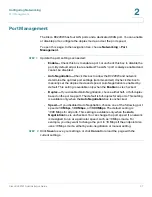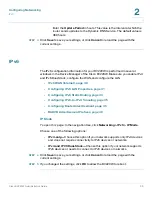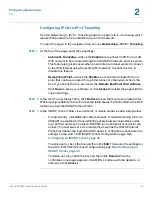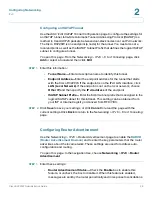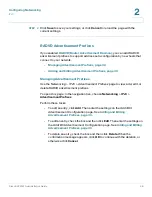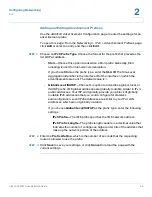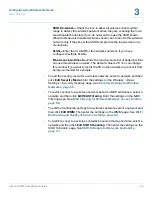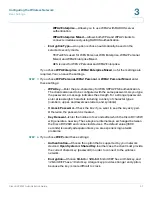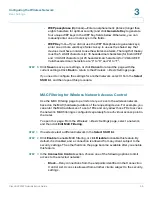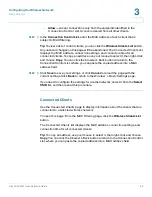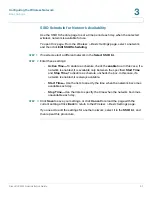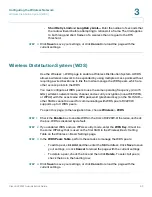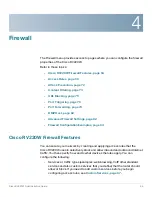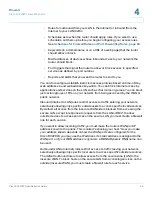
Configuring the Wireless Network
About Wireless Security
Cisco RV220W Administration Guide
51
3
Wireless Security Tips
Since you cannot physically prevent someone from connecting to your wireless
network, you need to take some additional steps to keep your network secure:
•
Change the default wireless network name or SSID
Wireless devices have a default wireless network name or Service Set
Identifier (SSID) set by the factory. This is the name of your wireless
network, and can be up to 32 characters in length.
You should change the wireless network name to something unique to
distinguish your wireless network from other wireless networks that may
exist around you, but do not use personal information (such as your Social
Security number) because this information may be available for anyone to
see when browsing for wireless networks.
See
Basic Settings, page 53
.
•
Change the default password for the Configuration Utility.
This router has a default password set by the factory. Hackers know these
published defaults and may try to use them to access your wireless device
and change your network settings. To thwart any unauthorized changes,
customize the device’s password so it will be hard to guess.
See
User Management, page 158
.
•
Enable MAC address filtering
Cisco routers and gateways give you the ability to enable Media Access
Control (MAC) address filtering. The MAC address is a unique series of
numbers and letters assigned to every networking device. With MAC
address filtering enabled, wireless network access is provided solely for
wireless devices with specific MAC addresses. For example, you can
specify the MAC address of each computer in your network so that only
those computers can access your wireless network.
See
MAC Filtering for Wireless Network Access Control, page 58
.
•
Enable encryption
Encryption protects data transmitted over a wireless network. Wi-Fi
Protected Access (WPA/WPA2) and Wired Equivalency Privacy (WEP) offer
different levels of security for wireless communication. Currently, devices
that are Wi-Fi certified are required to support WPA2, but are not required
to support WEP.

